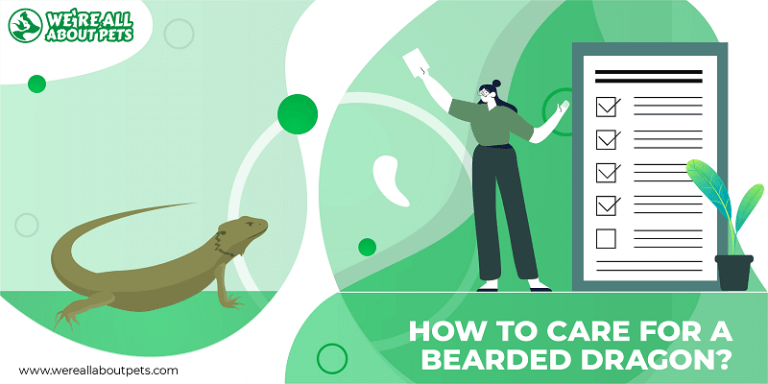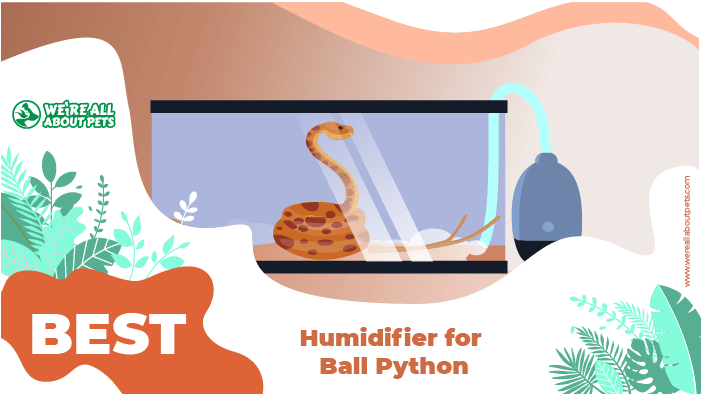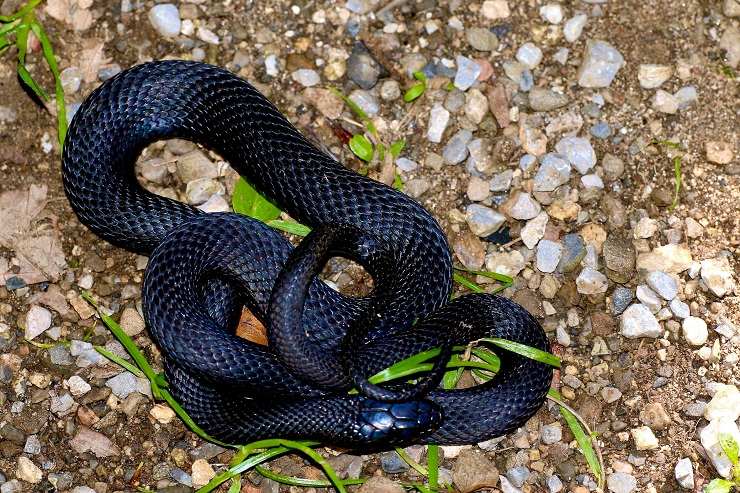Chinese Water Dragon: Nutrition, Habitat And Care Tips
This page contains affiliate links. We may earn money or products from the companies mentioned in this post through our independently chosen links, which earn us a commission. Learn More
Chinese water dragons can make good pets and be a great deal of fun to have in your home. In terms of care, they are a medium level of difficulty for reptiles. They’re also some of the most active and interesting reptiles in the pet trade. This article will help you understand their special needs and decide if they’re the right pet for you.
Care
Care of a reptile includes providing the right enclosure. It needs the proper temperature, lighting, humidity, substrate and size. Chinese water dragons can live about 15 years in captivity with good care. It also means giving good nutrition, since this is the cornerstone of health.
Nutrition
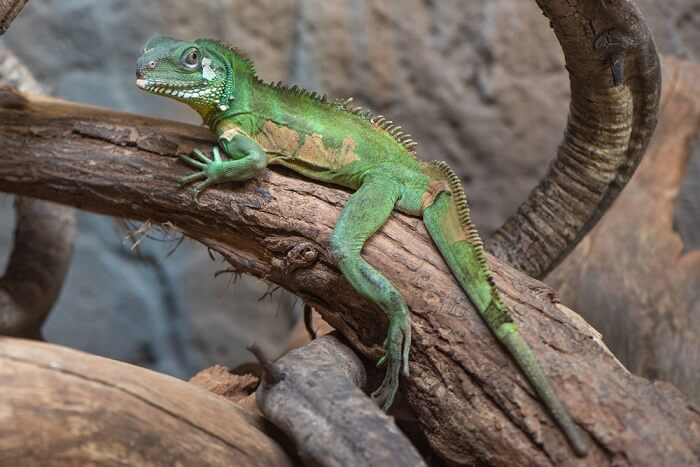
Chinese water dragons are omnivores, so they will eat both animal matter and vegetables. Most of their diet should consist of insect prey, with additional larger prey items and vegetables for the remaining portion.
They should never be given foods designed for other animals. Dog and cat food has a good deal of animal protein at levels that they can’t digest effectively. Those diets are hard on their kidneys and will lead to early kidney failure.
Mealworms, crickets, superworms, earthworms and Dubia roaches are all good choices for primary food items. Waxworms can be offered as treats. They should be fed good quality vegetables and a calcium supplement for several days prior to being offered to your pet dragon.
Additionally, they should be dusted with a calcium supplement (without D3) when fed to your pet. Insects and invertebrates have higher phosphorus than calcium, and the dusting gets that back to a positive ration that’s important for proper utilization of calcium. Weekly, the calcium supplement can be replaced by a multi-vitamin supplement. The vitamin supplement may contain D3.
Young animals should be fed daily, but as the dragon matures and growth slows, the insects should be offered 3-4 times per week. Excess feeding and lack of exercise may contribute to health problems from high cholesterol: Kummrow MS, Berkvens CN, Pare JN and Smith DA. Cerebral Xanthomatosis in Three Green water Dragons (Physignathus cocincinus). 2010, JZWM 41(1): 128-132.
Vegetables can be offered 1-2 times per week. Good choices include Romaine lettuce, red-or-green leafed lettuce, spring mix, hibiscus, or dandelion greens. Occasional addition of collard greens, carrot tops, kale, and mustard greens are fine provided they are done more as treats.
You can add other vegetables for variety: carrots, cactus pads, cucumber, bell pepper, butternut squash (steamed) and bok choy are all good choices. The vegetables should be finely chopped for Chinese water dragons. Calcium or vitamin supplementation is not required on the vegetables.
Occasional goldfish, slugs, snails, or pinkies can make up 10-15% of the diet. Make sure to get them from a source free of pesticide exposure.
Water should be available in the enclosure and should be cleaned and replaced daily. It should be deep enough and large enough to allow soaking, but it should give easy entry and exit. Chinese water dragons are excellent swimmers and can handle large water sources if they can get out without excessive effort.
Cage Size
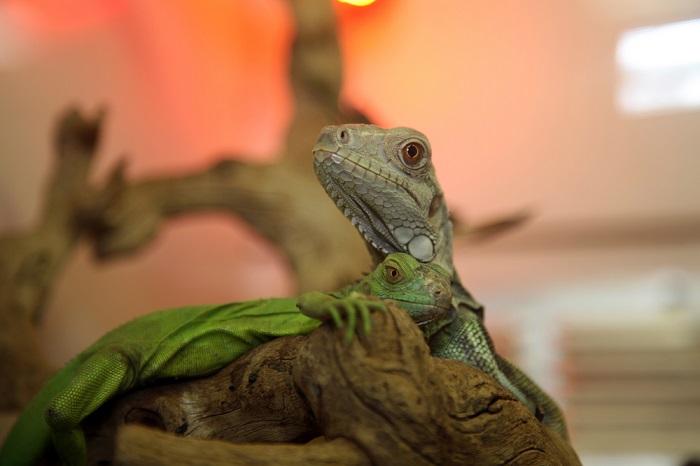
Adult Chinese water dragons can be 2-3 feet long. They are socially isolated animals and should be housed alone. Keep that in mind for the long-term plans. They’re also tree-dwelling animals, so the cage should be taller than it is wide to allow vertical movement.
Juveniles can be housed in a cage that’s 12-18 inches tall, but adults will need a 4 to 6-foot-tall cage. Lizards should always be housed in an enclosure that allows them to fully extend their bodies and tails in a straight line. Enrichment time outside the enclosure helps keep their minds active, get important exercise and can be a fun bonding experience.
The American Association of Zoo Keepers has a document describing recommended reptile enrichment that can be found here.
The lower portion of glass in the enclosure should be blocked. Water dragons have a bad habit of rubbing their noses against the glass and getting deep lesions on their snouts. Blocking the glass n the lower portion can help reduce that issue. Enrichment is the other important aspect. If they’re more mentally stimulated then they spend less time at the glass.
Substrate
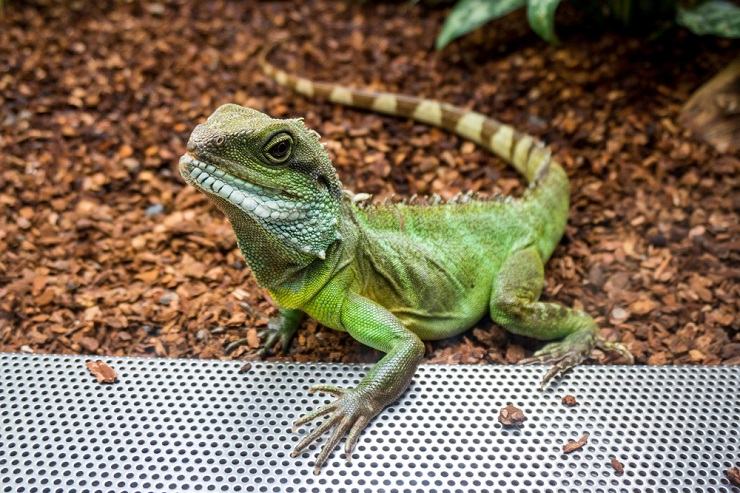
Enclosures should have a substrate that allows natural behaviors. For the bottom of the cage, several inches of sterile potting soil or coconut fiber are recommended. Cypress or aspen wood chips can also be added for a texture variety.
Avoid pine and cedar since they have irritating oils that may contribute to respiratory irritation. On top of the soil and coconut fiber, a thin layer of sphagnum moss will help maintain the high humidity required in the enclosure. The moss should be changed regularly to avoid the growth of mold.
In the vertical space, branches should be provided for climbing. The branches must be thick enough to allow an adult dragon to easily climb. The branches need to extend the vertical space all the way to the basking area and UV lighting. Live plants or artificial leaves can be included to provide enrichment and hiding areas.
Temperature
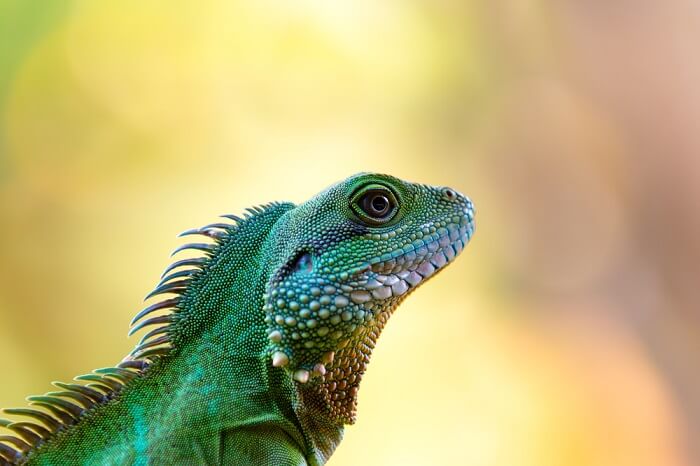
Enclosures should have a temperature range between 80 and 90 F, with a basking area that stays between 90-95F. A powerful heat lamp or ceramic heater can provide the needed heat source. Make sure that the lamp is above the level that would allow direct contact.
Lighting
Like most reptiles, Chinese water dragons need access to UVB lighting to make Vitamin D3 and utilize calcium properly. A UV light must be provided for 12 hours a day. Be aware that the UV spectrum wanes long before the light burns out, so it should be replaced every 6 months.
Humidity
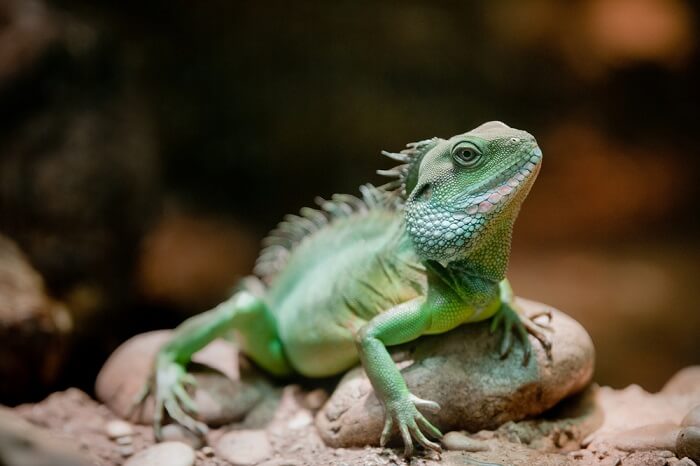
Chinese water dragons live in tropical rain forests. The humidity in the enclosure should be high: 80-85%. Be sure to use a hygrometer to measure the humidity in the enclosure. It’s difficult to maintain that level of humidity in most enclosures, so the use of a misting system is highly recommended. For more information on humidifiers, see our article on the best humidifiers on the market.
With humidity at this level, it’s important to clean the cage regularly and change substrate to avoid the growth of molds and bacteria that can cause respiratory and skin disease, accisotret.com.
Temperament
Chinese water dragons are generally gentle animals, but they don’t like to be handled. That should be a consideration in a decision to adopt one of these animals. If you’re looking for an interactive pet or for a pet for a child, it may not be the best choice. Handling will stress them and may affect their health, though when handled, biting is rare.
Health Concerns
All reptiles should be seen regularly by a veterinarian. The most common health concerns that you may see include:
- Respiratory infections
- Bacterial or fungal infections in the jaw
- Nutritional deficiencies
- Burns
- Abscesses
- Skin diseases, including bacterial and fungal infections
- Parasites
It’s also good to get an annual health exam for your lizard. If you need to find an experienced reptile veterinarian, start your search here.
Summary
Chinese water dragons can be great pets for someone willing to make the commitment to the care they require. They aren’t the easiest reptiles to provide care for, but they are a fun species of lizard to keep in your home.
Frequently Asked Questions
Are Chinese water dragons good pets?
They can be great pets as long as you realize that they have moderately difficult care requirements. If you have the time, money and space to provide good care, they are beautiful and exciting lizards to keep.
How big do Chinese water dragons get?
Adults can be 2-3 feet long from nose to tail tip. They’ll weigh 1-2 pounds as adults.
How much does a Chinese water dragon cost?
The cost will vary a great deal by region and by the source (pet stores vs. high end breeders). On the low end they may be found for $20, but some may cost well over $100. Bear in mind the cost of the enclosures, lighting, heat sources and humidifiers as well when considering them as a pet.
Do Chinese water dragons like to be held?
Generally, no. Some tolerate it fairly well, but handling can be stressful for them. However, they are intelligent animals, and they readily respond to target training. That allows for some fun interaction while keeping their stress level down.

